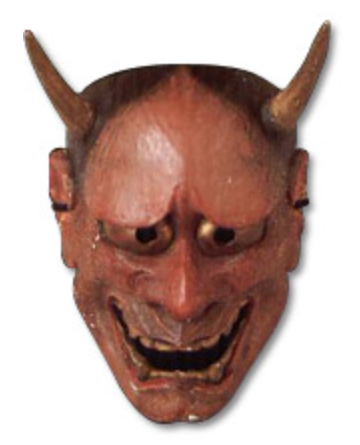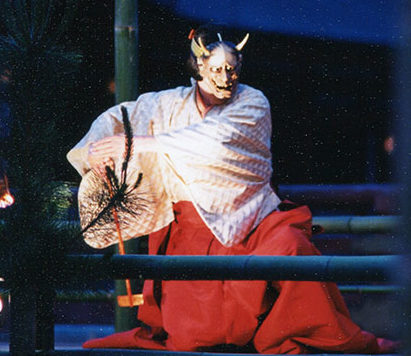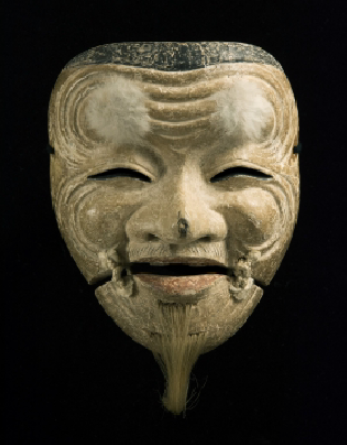
Our NFT work is inspired by the Hannya Mask. Hannya Mask is used in Noh Theater for the Rolle of female Demons. The word Hannya means the wisdom in Buddism, in other words, the sprit will come to spiritual enlightenment by prayer. The characters with this mask became demons being trapped in emotional attachements. However, by the end of the piece of Noh, they would get back the normal emotional status from their madness . Second theory about the origin of Hannya is that the person who made the first Hannya mask was named ” Hannya Bou” .

This mask expresses two emotions. The demons look down to show their sufferings and sadness while they are fighting against monks. when they attack, they look up to show their anger. The demons in Noh Theater can be male or female, but the ones with these horns like Hannya are always female.

The first Noh Masks were created in 8th century and the styles were established by 12th century. 4 types of masks seemed to be used; Chichi no Jyo, Okina, San Souba, Enmei-Kanja. Kasuga Temple’s document writes about Sarugaku, Noh theater, performed in 1283 with mask of Okina Omote. Okina Omote is a mask of an old man. After the Northern and Southern Courts Period, 1337 to 1392, the Japanese culture started to flourish by the competition between two courts, Nothern in Kyoto and the Southern in Yoshino, Nara. This period is short but played an important Rolle for a new Japanese production and aesthetic sense.
This is the case for Noh together with the great work of Ze-ami who brought up the artistic level of Noh to today’s level. At that time in 14th to 15th century, there were 10 types of masks. In 16th century, Hideyoshi Toyotomi named three important masks as ” Setsu , Getu, ka”: ” Snow, Moon and Flower.” Moon was burnt in a fire of Edo castle but the mask of Flower is in the Mitsui Museum and the mask of Snow is with Kongo family, the master of Noh based in Kyoto.
references :